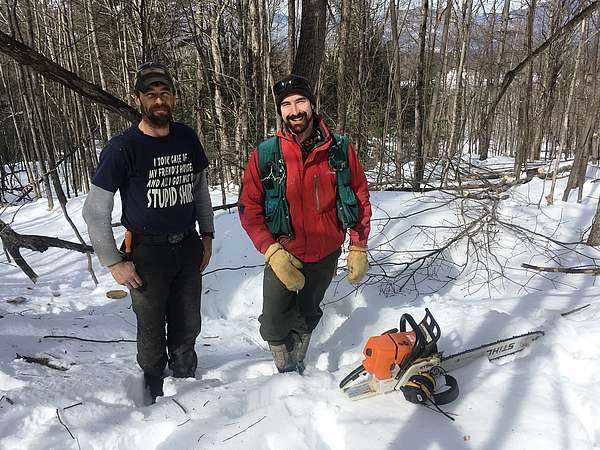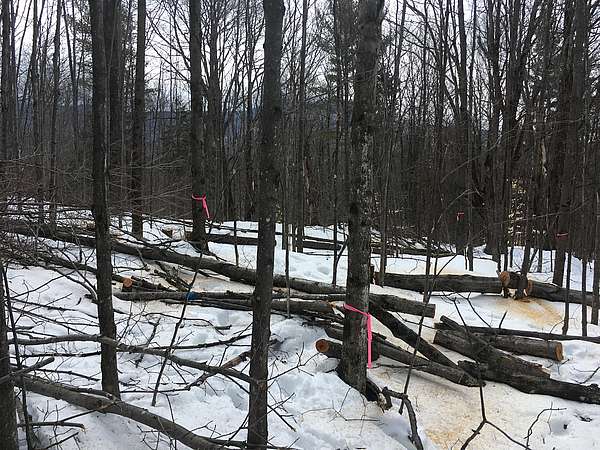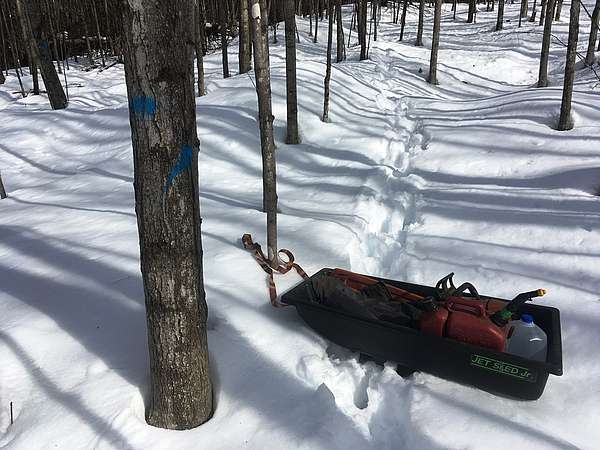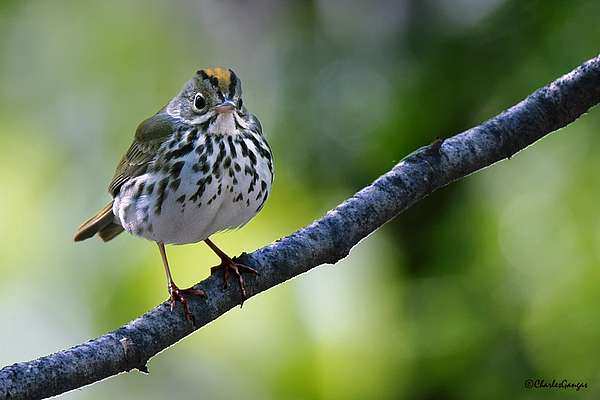If you've been hiking at Kirchner Woods this winter, you may have noticed lots of flagging and blue paint on some of the trees. Off of the western side of the Upper Bucket Trail, trees marked with pink flagging have been selected to be "crop trees" - healthy, vigorous individuals that we want to keep and grow. Trees marked with slashes of blue paint around the crop trees are being removed to create more light and space around the trees to be favored. In addition, small clusters of low-vigor trees have also been marked with blue paint and will be cut to create little openings - or gaps - in the forest canopy. The hope is that new seedlings will take off in these gaps, adding to the understory nesting habitat and creating a new generation of trees in the forest.
This week, logger, Mark Foster, has started cutting marked trees under the direction of SLT's consulting forester, Allan Thompson of Northern Stewards LLC. Foster is dropping and leaving the trees he cuts in a 4-acre section of the project area. The felled trees are too small in diameter to pay their way out of the woods as logs or firewood, so will be left on site to add habitat and ecological value instead. This practice of "crop tree release" and other early forestry treatments, such as thinnings, are investments that pay off in long-term improvements in timber quality, overall tree health, and habitat value for wildlife like songbirds. However, these pre-commercial practices can be challenging to complete since landowners often have to pay upfront for the work. In this case, the Natural Resource Conservation Service (NRCS) has provided incentive funding through the Environmental Quality Incentives Program (EQIP) - which is available to any qualifying forest landowner in Vermont - to help Stowe Land Trust cover this cost.
This first phase of the larger project should be complete this week - just in time for spring and the birds' return. In the cut area, keep an eye and ear out for forest songbirds like the Eastern Wood-Pewee that like feed on insects in small, sunny forest gaps and Ovenbirds that perch on low branches to sing their ascending teacher-teacher-TEACHER song. The rest of the project will be completed next winter after the migrant songbirds head back south and frozen conditions return.



